
Norman Percevel Rockwell was an American painter and illustrator. His works have a broad popular appeal in the United States for their reflection of the country's culture. Rockwell is most famous for the cover illustrations of everyday life he created for The Saturday Evening Post magazine over nearly five decades. Among the best-known of Rockwell's works are the Willie Gillis series, Rosie the Riveter, The Problem We All Live With, Saying Grace, and the Four Freedoms series. He is also noted for his 64-year relationship with the Boy Scouts of America (BSA), during which he produced covers for their publication Boys' Life, calendars, and other illustrations. These works include popular images that reflect the Scout Oath and Scout Law such as The Scoutmaster, A Scout Is Reverent and A Guiding Hand, among many others.

Rosie the Riveter is an allegorical cultural icon in the United States who represents the women who worked in factories and shipyards during World War II, many of whom produced munitions and war supplies. These women sometimes took entirely new jobs replacing the male workers who joined the military. She is widely recognized in the "We Can Do It!" poster as a symbol of American feminism and women's economic advantage. Similar images of women war workers appeared in other countries such as Britain and Australia. The idea of Rosie the Riveter originated in a song written in 1942 by Redd Evans and John Jacob Loeb. Images of women workers were widespread in the media in formats such as government posters, and commercial advertising was heavily used by the government to encourage women to volunteer for wartime service in factories. Rosie the Riveter became the subject and title of a Hollywood film in 1944.
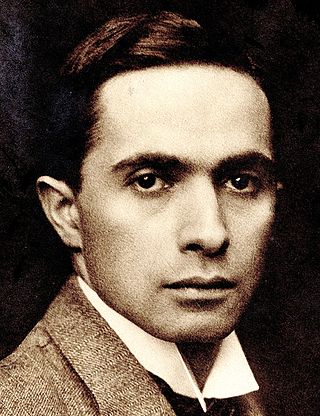
Joseph Christian Leyendecker was one of the most prominent and financially successful freelance commercial artists in the U.S. He was active between 1895 and 1951 producing drawings and paintings for hundreds of posters, books, advertisements, and magazine covers and stories. He is best known for his 80 covers for Collier's Weekly, 322 covers for The Saturday Evening Post, and advertising illustrations for B. Kuppenheimer men's clothing and Arrow brand shirts and detachable collars. He was one of the few known gay artists working in the early-twentieth century U.S.
Joseph Csatari is a realist artist who worked with Norman Rockwell. As a boy, Csatari had painstakingly recreated Saturday Evening Post covers that Rockwell had painted. In 1977, shortly before Rockwell died, Csatari was commissioned as the Boy Scouts of America (BSA)'s official artist.

The Society of Illustrators (SoI) is a professional society based in New York City. It was founded in 1901 to promote the art of illustration and, since 1959, has held an annual exhibition.
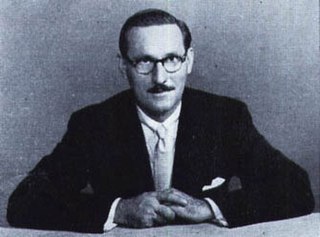
Al Parker (1906–1985) was an American artist and illustrator.

John Philip Falter was an American artist best known for his many cover paintings for The Saturday Evening Post.

Russian Schoolroom (1967), also known as The Russian Classroom and Russian Schoolchildren, is an oil on canvas painting created by American illustrator Norman Rockwell (1894–1978) and commissioned by Look magazine. It depicts Soviet schoolchildren in a classroom with a bust of Soviet leader Vladimir Lenin.
Anita E. Kunz, OC, DFA, RCA is a Canadian-born artist and illustrator. She was the first woman and first Canadian to have a solo exhibit at the Library of Congress in Washington, D.C.
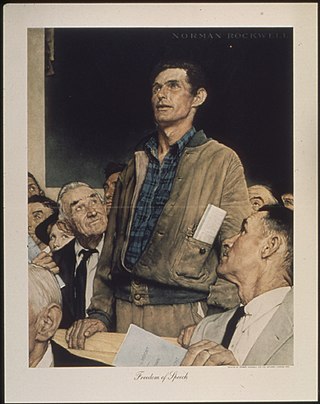
The Four Freedoms is a series of four oil paintings made in 1943 by the American artist Norman Rockwell. The paintings—Freedom of Speech, Freedom of Worship, Freedom from Want, and Freedom from Fear—are each approximately 45.75 by 35.5 inches, and are now in the Norman Rockwell Museum in Stockbridge, Massachusetts. The four freedoms refer to President Franklin D. Roosevelt's January 1941 Four Freedoms State of the Union address, in which he identified essential human rights that should be universally protected. The theme was incorporated into the Atlantic Charter, and became part of the Charter of the United Nations. The paintings were reproduced in The Saturday Evening Post over four consecutive weeks in 1943, alongside essays by prominent thinkers of the day. They became the highlight of a touring exhibition sponsored by The Post and the U.S. Department of the Treasury. The exhibition and accompanying sales drives of war bonds raised over $132 million.
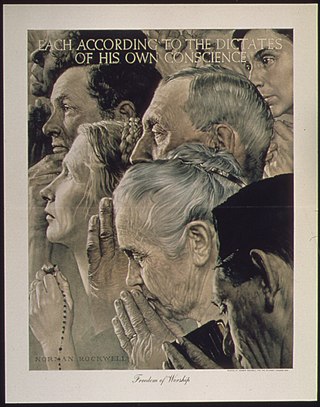
Freedom of Worship or Freedom to Worship is the second of the Four Freedoms oil paintings produced by the American artist Norman Rockwell. The series was based on the goals known as the Four Freedoms enunciated by Franklin D. Roosevelt, president of the United States from 1933 to 1945, in his State of the Union Address delivered on January 6, 1941. Rockwell considered this painting and Freedom of Speech the most successful of the series. Freedom of Worship was published in the February 27, 1943, issue of The Saturday Evening Post alongside an essay by philosopher Will Durant.
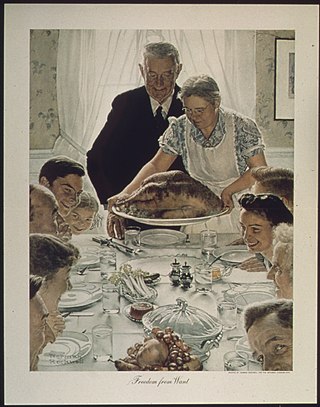
Freedom from Want, also known as The Thanksgiving Picture or I'll Be Home for Christmas, is the third of the Four Freedoms series of four oil paintings by American artist Norman Rockwell. The works were inspired by United States President Franklin D. Roosevelt's 1941 State of the Union Address, known as Four Freedoms.
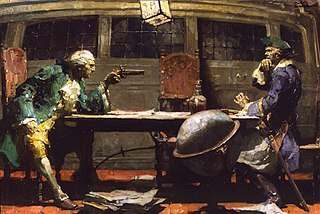
Mead Schaeffer was an American illustrator active from the early to middle twentieth century.
Gregory Manchess is an American illustrator from Kentucky. His illustrations have appeared in magazines, digital murals, illustrated movie posters, advertising campaigns and book covers including sixty covers for Louis L’Amour. His work has appeared on Major League Baseball World Series Programs, Time, Newsweek, The Atlantic Monthly, Playboy, The Smithsonian and National Geographic. His style includes broad brush strokes and excellent figure work.

"We Can Do It!" is an American World War II wartime poster produced by J. Howard Miller in 1943 for Westinghouse Electric as an inspirational image to boost female worker morale.

Tom Lovell was an American illustrator and painter. He was a creator of pulp fiction magazine covers and illustrations, and of visual art of the American West. He produced illustrations for National Geographic magazine and many others, and painted many historical Western subjects such as interactions between Indians and white settlers and traders. He was inducted into the Society of Illustrators' Hall of Fame in 1974.
Chet Kalm was an American painter, teacher, and illustrator. He was an instructor and administrator at the Parsons School of Design, where he also established the Foundation Department. His work was featured in more than thirty solo exhibits throughout the United States and Europe and displayed in galleries such as the Norman Rockwell Museum and the Everhart Museum.

Adolph Treidler (1886–1981) was an American artist known for his illustrations, posters, commercial art, and wartime propaganda posters.
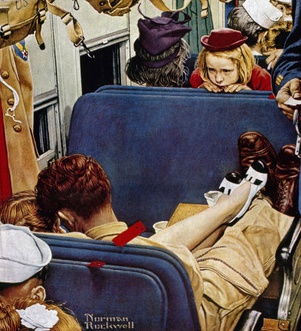
Little Girl Observing Lovers on a Train, also known as Travel Experience or Voyeur, is a painting by American illustrator Norman Rockwell. It was originally created for the cover of The Saturday Evening Post on 12 August 1944.


















